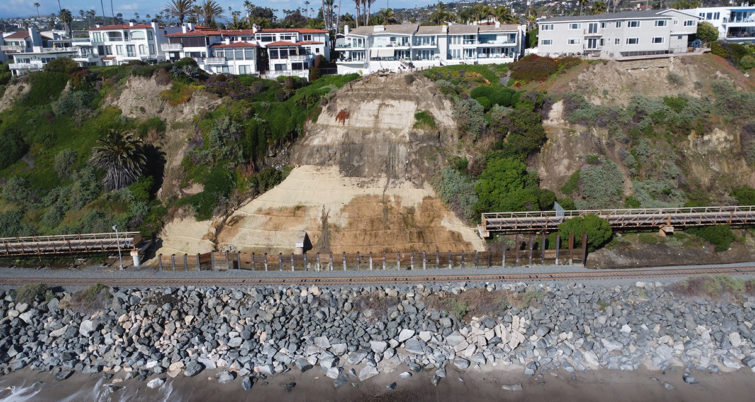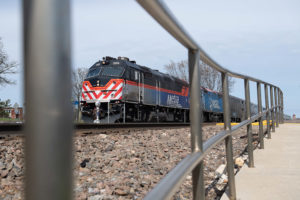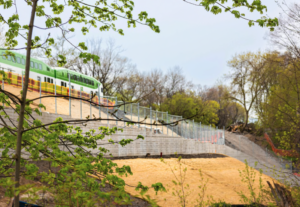Sand Nourishment, Rock Revetment Among Coastal Rail Resiliency Solutions
Written by Jennifer McLawhorn, Managing Editor
ORANGE COUNTY – For coastal rail resiliency, OCTA looks to sand nourishment, rock revetment, and a wall as potential solutions.
These three are under consideration, according to OCTA. On Monday, May 6th, these will be presented in a report to the agency’s Regional Transportation Planning Committee. On May 13th, these will be presented to the full Board of Directors. This comes after “multiple listening sessions, OCTA Board feedback, and other stakeholder input on OCTA’s Coastal Rail Resiliency Study – an effort to protect a critical link in Southern California’s rail infrastructure.” Earlier this year, RT&S posted a series of updates regarding freight and passenger operations after a landslide occurred in January.
OCTA CEO Darrel E. Johnson said sand “is a part of the solution as eroding beaches continue to pose a threat to rail operations. . . In response to the feedback to date, we refined our initial concepts and included sand, along with riprap, a wall, and engineered revetment in the most vulnerable areas to give us a clearer picture of what solutions could look like.” During a hearing with the State Senate Transportation Subcommittee on LOSSAN Rail Corridor Resiliency, Johnson “underscored the importance of involving multiple stakeholders – from the community, from regulatory agencies, and others in developing and determining a successful path forward.”
The Coastal Rail Resiliency Study looks at short-term and medium-term strategies to protect the railway in a “vulnerable” stretch. Longer-term solutions are also being explored. The assessment from May 6th will identify areas along that stretch that need reinforcement and monitoring in order to “prevent additional soil and debris from privately owned hillsides falling into the rail right-of-way.” Building additional catchment walls (as occurred earlier this year) along with sand nourishment and “engineering placement of large protective boulders (known as riprap)” are several of the solutions considered. OCTA says the goal is to reinforce the area before the next storm season arrives.
In working with local, state, and federal partners, OCTA is working to explore all funding options as its early estimates of protecting the railway are in the ballpark of $210 million to $340 million depending on “the permitting process, availability of materials, specialized equipment.” OCTA says it would need around 500,000 cubic yards of sand for sand nourishment.
Another public meeting will be held at San Clemente City Hall on May 30th from 5:00 p.m. to 6:30 p.m. After the concepts are developed in conjunction with input from the community, a draft plan will “address protecting the rial line in place for the next 10 to 30 years goes to the OCTA Board in 2025.”





